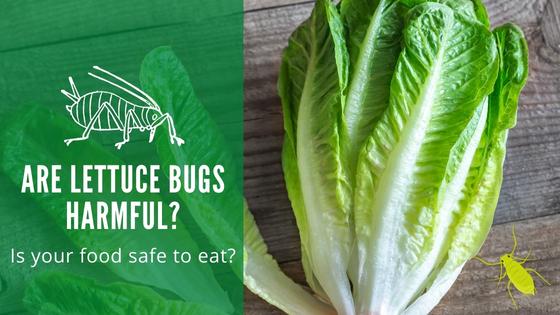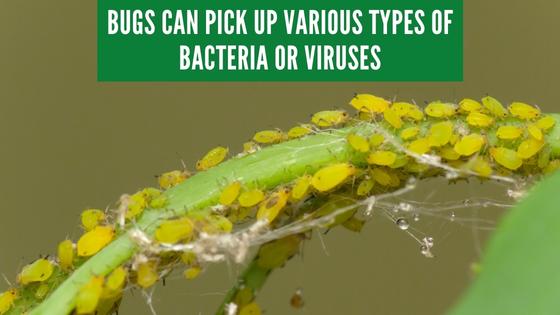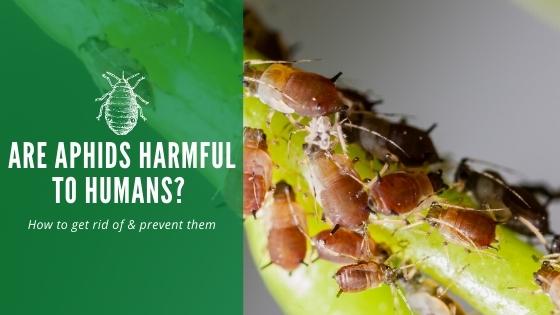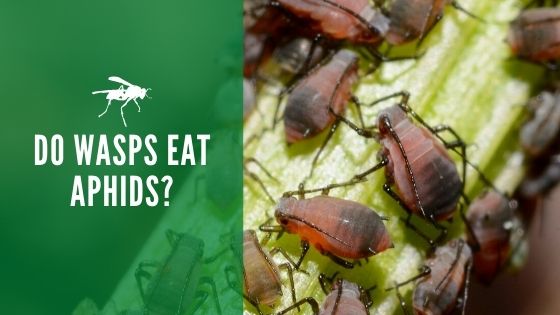Are Lettuce Bugs Harmful?

If you were to list what you have in common with insects, you might find it hard to come up with much of anything. But, you can safely say that you and certain insects have the same penchant for enjoying some leafy greens.
Lettuce bugs can sometimes be harmful to the plant, but they typically won’t hurt you. However, the answer to this question comes down to which type of bug you find on your lettuce and how you decide to handle them.
What Are Common Lettuce Bugs?
When you hear someone talking about lettuce bugs, they usually talk about aphids. These tiny insects are often the perfect shade of green to blend in with lettuce leaves. While a small number of aphids won’t harm a plant, large populations can.
Aphids can transmit diseases from one plant to another as they feed on the leaves. Lettuce that appears yellowed or has curling leaves or stunted growth may have a pest-related virus.
Aphids can also attract other insects. As the aphids feed on the fluid in lettuce leaves, they leave behind a sticky substance that people often refer to as honeydew. As you might suspect, this substance attracts ants.
Ants and aphids have a unique relationship. The ants that feed on the honeydew will even go so far as to protect aphids from predators and carry their eggs and larva to new host plants. Gardeners often find an ant problem and an aphid near lettuce plants and other leafy greens.
You can also find a few other slightly larger bugs on your favorite food in the garden. Caterpillars are commonly found on lettuce since they love to eat through plump, juicy leaves.
The cabbage looper is one well-known type of caterpillar that invades gardens. If the infestation is bad enough, they can even eat through an entire crop.
Are Bugs Easy to See On Lettuce?
Aphids’ small size and color make them pretty hard to see on lettuce, but you can spot them during a close inspection. You’ll want to make sure to move the leaves of the lettuce head apart so that you can look for them beneath the different surfaces.
Cabbage worms often hide along the spines of the lettuce leaves, where they can camouflage themselves as just being part of the plant.
Fortunately, caterpillars often move, making it easier to see them as you perform the lettuce inspection.
Other bugs should stand out against the background of the green leaves. Dark spots on lettuce are often ants, beetles, and other insects that aren’t perfectly suited for blending in.
Is It Okay to Eat Lettuce With Bugs On It?
Technically, many of the bugs that you find on lettuce won’t harm you. You might have even seen chocolate-covered ants or fried crickets in a novelty store. Aphids are also edible and can have a slightly bitter to sweet flavor.
Although you might be able to eat some bugs somewhat safely, it is highly possible that you don’t want to. People who eat a kosher diet often choose to inspect foods that are known for having a high risk of carrying insects.

You may also find the concept of eating a bug in your salad to be unsavory. If so, there could be a good reason for feeling so squeamish. The truth is that bugs wander around outside, where they can pick up various types of bacteria or viruses.
If you think about your garden space alone, you might have fertilizer and compost on the ground that contains bacteria and chemicals. Wild animals may also sometimes use your garden as a litter box, and the last thing you want is to eat an insect exposed to such contamination.
With that in mind, keeping the bugs off your lettuce is best, especially before you decide to consume it. Sprinkling chia seeds on your salad is a much safer way to get a little protein in your diet without eating insects.
Is Washing Off Lettuce Bugs Helpful?
Removing bugs from your lettuce is essential if you are still growing the plants in your garden. Typically, you can wash most bugs off outside with a sprayer hose as you water your plants. The lettuce that you are preparing to eat requires a few different steps.
Some bugs will wash off lettuce just as easily as the soil. Ants, beetles, and similar bugs usually rinse away with minimal water pressure. Aphids, however, are a different story.
Aphids tend to cling to lettuce like glue, and you might keep discovering more even after you thought you got them all off. Dead aphids are especially difficult to remove from the lettuce leaves.
There are several ways to wash bugs off lettuce, and you can experiment to figure out what works best for you.
You’ll first want to start by filling a bowl with water. Then, you can add a few sprinkles of salt to help break up the surface tension between the aphids and the lettuce.
Some people also use vinegar in the water, which can sometimes alter the lettuce taste. You can also find pre-made vegetable washes that are food safe and make the whole process easier.
After you swish the lettuce, you should see bugs rising to the water’s surface. You can also use your hands to lightly scrub the lettuce leaves to remove bugs from areas that are heavily infested.
Once you are satisfied that all of the bugs are gone, you’ll want to give the lettuce a final rinse under running water to remove any soap or salty residue. Then, you should be able to feel safe eating leaves that are finally bug-free.
How Do You Keep Bugs Off of Lettuce?
Lettuce grown outside is constantly exposed to bugs, but you can prevent them by using a few simple gardening practices.
Keeping outdoor pest populations controlled in general has a beneficial effect on preventing bugs in your lettuce. Perimeter spraying around your property helps combat caterpillars, and other insects attracted to lettuce.
Natural predators like ladybugs can sometimes help keep aphid populations down. However, you’ll want to weigh this method’s pros and cons carefully. Sometimes, a large population of ladybugs can attract other pests to your garden.
If you need to resort to using chemical pest control near your lettuce, you can rest assured that there are types that are safe for use around food sources. Using these products can give you peace of mind that your food is insect-free, and you’ll be able to protect your crop from damaging swarms of lettuce-eating pests.


